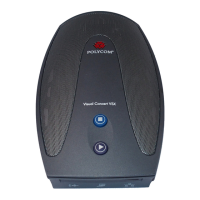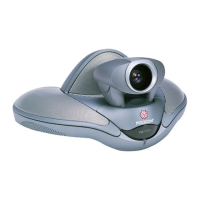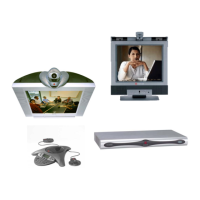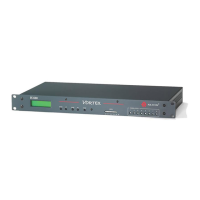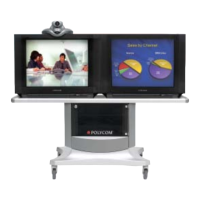Chapter 5 System Information and Diagnostics
© Polycom, Inc. 153 ViewStation FX/VS 4000 User’s Guide
Pass-Thru Mode
In Pass-Thru Mode, the operational modes of both endpoints’
RS-232 ports depend on the port configuration of each endpoint.
Thus, two operational situations might arise:
• Pass-Thru Mode to Pass-Thru Mode: Both endpoints are set to
Pass-Thru Mode.
• Pass-Thru Mode to Control Mode: The near site is set to
Pass-Thru Mode and the far site is set to Control Mode.
The following table summarizes the port operation based on the
RS-232 mode configured by each endpoint.
The following information describes operational modes in more
detail.
Pass-Thru Mode to Pass-Thru Mode—Two stations set to
Pass-Thru Mode behave essentially as a null-modem between their
respective externally connected devices. These two stations can be
two ViewStation FXs, two VS4000s, or one ViewStation FX and one
VS4000. The RS-232 port is used as a data channel over an H.320
video call. Data received from the RS-232 port on the near-end
ViewStation FX or VS4000 station is pushed through the call to the
far-end endpoint and then transmitted to the endpoint’s RS-232 port.
Similarly, data from the far-end endpoint is transmitted back to the
near-end ViewStation FX (through the H.320 call) and then
transmitted to the near-end RS-232 port.
The data channel speed is dynamically allocated. The maximum
data flow rate is based on the bandwidth of the call.
Near-Side Mode Far-Side Mode Resulting Operation
Control N/A Near-side CLI (Command Line
Interface)
Pass-Thru Control The near-side controls the CLI
of the far side
Pass-Thru Pass-Thru The data is passed in
full-duplex mode from the
near-side RS-232 port to the
far-side RS-232 port
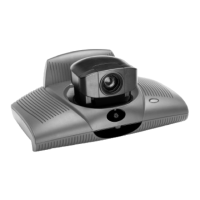
